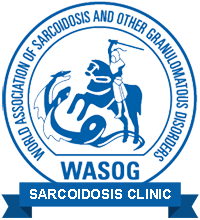Polymyxin-B hemoperfusion for acute exacerbation of idiopathic pulmonary fibrosis: serum IL-7 as a prognostic marker
Keywords:
Acute exacerbation, cytokine, hemoperfusion, idiopathic pulmonary fibrosis, polymyxinAbstract
Background: Acute exacerbation (AE) of idiopathic pulmonary fibrosis (IPF) has an extremely poor prognosis. Direct hemoperfusion with a polymyxin B-immobilized fiber column (PMX-DHP) has been used to improve oxygenation for acute respiratory distress syndrome.The study aim was to retrospectively determine the predictive factors affecting the prognosis of AE of IPF treated with PMX-DHP. Methods:We studied patients suffering from AE of IPF, treated with PMX-DHP combined with high-dose corticosteroid therapy. Stored serum taken before and after PMX-DHP therapy was analyzed for 27 cytokines and chemokines. Results: Nineteen patients with AE of IPF were studied. The median survival time after diagnosis of AE was 22 days. Survival rates after diagnosis of AE were 47.4% at 30 days, 31.6% at 60 days, and 26.3% at 90 days. Serum levels of Interleukin (IL)-7, an anti-fibrotic cytokine, in survivors at day 30 following PMX-DHP therapy (‘Survivors’) significantly increased after the treatment, compared to serum levels of non-survivors at day 30 after the therapy (‘Nonsurvivors’), which did not demonstrate a significant change. Serum levels of IL-1β, interferon-γ and chemokine ligand (CCL) 2 levels were not significantly altered in ‘Survivors,’ but were significantly changed in ‘Nonsurvivors.’ Multivariate Cox proportional-hazards analysis showed that an increase in IL-7 levels after PMX-DHP therapy and treatment without intubation (other than invasive positive-pressure ventilation) were significantly better prognostic factors. Conclusion: The results suggest that serum IL-7 may be a useful prognostic factor for patients with AE of IPF treated with PMX-DHP, possibly reflecting underlying anti-fibrotic mechanisms.Downloads
Published
Issue
Section
License
This is an Open Access article distributed under the terms of the Creative Commons Attribution License (https://creativecommons.org/licenses/by-nc/4.0) which permits unrestricted use, distribution, and reproduction in any medium, provided the original work is properly cited.
Transfer of Copyright and Permission to Reproduce Parts of Published Papers.
Authors retain the copyright for their published work. No formal permission will be required to reproduce parts (tables or illustrations) of published papers, provided the source is quoted appropriately and reproduction has no commercial intent. Reproductions with commercial intent will require written permission and payment of royalties.

This work is licensed under a Creative Commons Attribution-NonCommercial 4.0 International License.




